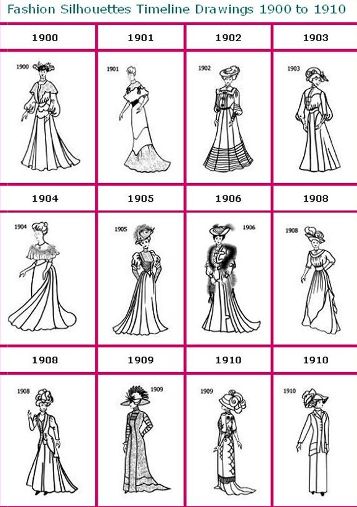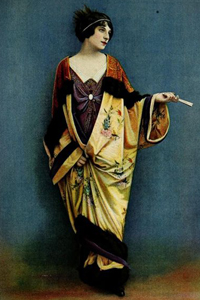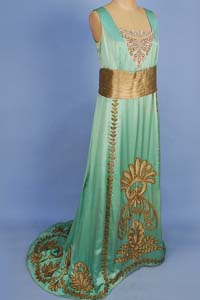Fashion is often called one of the types of conceptual art – through the combination of different elements (clothing, accessories, color solutions) it creates a single, individual image. Therefore, with the emergence of the Modern style, which replaced obsolete trends in art, the most famous couturiers of the early twentieth century began to embody its main canons in clothing collections (Goody 126). The legacy of the Modern style is many-sided, complex, contains not only undeniable values, artistic discoveries but also evidence of unresolved aesthetic contradictions. Answering the question whether fashion is a product of Modernism it should be stated that present day fashion is based on the main principles and ideas of Modernism, but also depicts other periods.
Modern – the name of the style, which was widely used in the art of the late XIX and early XX centuries. The main content of the Modern was the desire of artists to contrast their creativity with the historicism and eclecticism of art of the second half of the XIX century. The artists refused of straight lines and angles for more natural lines; they were interested in new technologies and flowering of applied art. (Childs 7).
Modern style in clothes: the desire for practicality
The fashion of modernism passed in its development three stages. The first stage (1898-1900) assumed the correct posture of the figure, expansion of the sleeves from the wrist to the shoulders. The skirt had the shape of a bell, elongated and trimmed with frills. The second stage (1901-1905) is characterized by the S-silhouette, large hats, a natural shoulder line, extended sleeves, and richly decorated skirt.

The third stage (1905-1907) was distinguished by a shortened skirt, slightly opening the toe of the shoes and practically devoid of decor, and the return of the silhouette to a normal vertical position. Since 1903, dresses had become freer; corsets had gradually disappeared. Upper clothes were supplemented with hats-current, shoes, and boots with lacing and heels, umbrellas with frills, walking-sticks, gloves, mitts.

Underwear of crispy fabric was very fashionable because of rustling sounds, which together with a strong smell of perfume, created the impression of airiness. Over evening dresses with a deep neckline they wore a kimono coat. The most refined part of the fashion was, undoubtedly, jewelry. No period in the history of art gave it such importance as modernism. Jewelry not only complemented the costume but also became a kind of an emblem, a symbol, forming a certain female type (Butor 271).
Outstanding fashion figures of the period of modernism
The French couturier Paul Poiret became a new fashionable reformer who insisted on releasing the ladies’ body from the suffocating corset and changing rigid skeleton skirts to dresses and skirts of a softer cut with flowing fabrics and free lines. In addition to old fashion, Poiret introduced in Europe, in particular in France, the features of the Japanese national costume, which surprisingly harmoniously fit into the European dress. So in the western suit began to take root kimono, which found its use both in home clothes and in secular dresses (Carver 302). “Hobble skirt” was the invention of Poiret and another bow to the ethnic fashion of the East (Hu 89). This skirt contrasted sharply with the romantic, lush skirt-bell, was fitting to the body to the ankles and did not allow to make full steps, dooming women to a small, seminal gait. The volume of sleeves gradually disappeared; they were more and more adjacent to the hand.

The entire period of the Modern covered the work of the Frenchwoman Jeanne Paquin. Her fashion house opened in 1891 and very soon gained popularity among aristocrats, ordering her evening dresses. She worked in a rather conservative style, offering outfits of the S-shaped silhouette, but she became the first woman in the world of fashion to achieve international recognition and was even awarded the Order of the Legion of Honor (Bellow 129).
It can not be said that the fashion designers of this time made a revolution, forcing women to remove the shackles of tight corsets and abandon the crinolines for light, elegant outfits. The image of modern women became intermediate, when there was a gradual and painless refusal from fanciful, sometimes romantic, but not always comfortable volumes with the introduction of clean lines, falling fabrics with a general tendency towards minimalism. Modern fashion is not a pure product of Modernism, but it is largely based on its principles and ideas.
Works Cited
Bellow, Juliet. Modernism on Stage: The Ballets Russes and the Parisian Avant-Garde. Ashgate Publishing, Ltd., 2013.
Butor, Michel, et al. “Fashion and the Modern.” Art in Translation, vol. 7, no. 2, 2015, pp. 266-281.
Carver, Beci. “What Women Want: The Modernist Kimono.” Modernism/modernity, vol. 22, no. 2, 2015, pp. 303-314.
Childs, Peter. Modernism. Routledge, 2016.
Goody, Alex. “Jessica Burstein Cold Modernism: Literature, Fashion, Art.” University Park: Pennsylvania State University Press, vol. 112, no.1, 2014, pp. 126-128.
Hu, Shaoying. “Hanfu Elements in Modern Fashion Design and Innovation.” Asian Social Science, vol. 10, no. 13, 2014, p. 89.